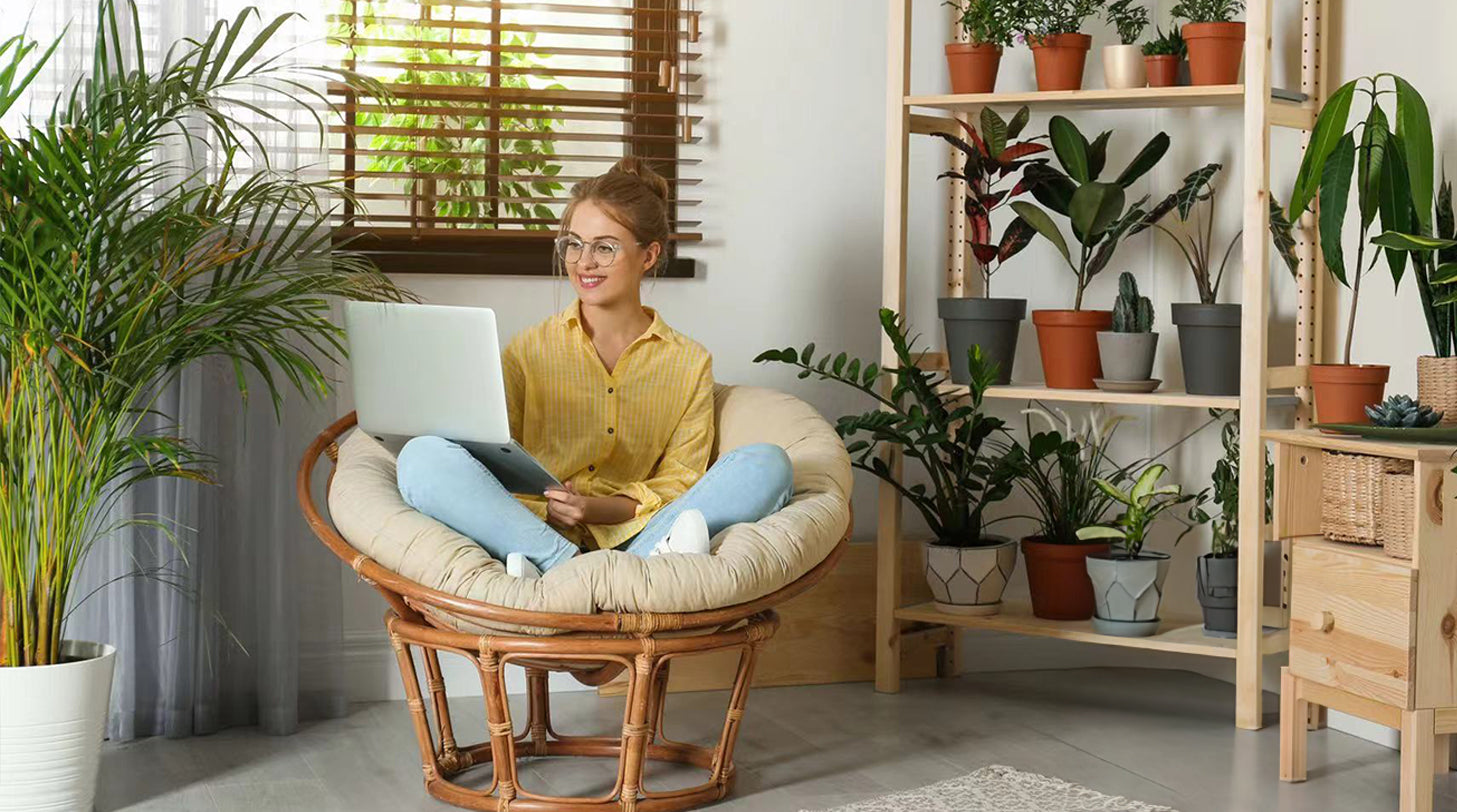Air-purifying plants bring good indoor air
Plants carry out photosynthesis and contribute oxygen in this way. But they do much more than that. Some beautiful plants can clear indoor air of pollutants that get mixed into the air we breathe through exhaust fumes, industry, and construction materials. In this way, they ensure better air quality. For your health, you should upgrade your home with the right air-purifying indoor plants.
The air in the room is thick
As modern humans, we spend most of our time indoors – whether at home or at work. It's not uncommon for the air to be thick. Unfortunately, our own four walls do not protect us from environmental pollutants—quite the opposite. The air quality inside a room is often worse than outside due to building materials, paint, mold, dust and last but not least cigarette smoke.
Examples of common toxic chemicals found in rooms include:
Trichlorethylene (TRI): Found in paints, adhesives, cleaners and insect sprays
Formaldehyde: Commonly found in rooms, for example in insulation, furniture, cigarette smoke, cleaning products, etc.
Benzene: from exhaust fumes, plastics and dyes, detergents, cigarette smoke, etc.
Xylene: from solvents, paints, plastics, pesticides, etc.
Ammonia: produced by the breakdown of manure, especially in agriculture, but also found in litter bins
These substances can cause headaches, allergies, and poor concentration. Some can even interfere with the central nervous system and have potential carcinogenic effects.
The indoor air is better and greener!
Luckily, there’s a natural and relatively inexpensive way to ensure better air quality within your own four walls: decorate your living space with lots of greenery! Not only do plants create a friendly atmosphere, they also act as silencers, oxygen distributors, air humidifiers - some selected specimens are even actual air purifiers!
Plants are oxygen donors and air humidifiers
Plants carry out photosynthesis – a metabolic process that makes our existence on Earth possible. Oxygen (O 2 ) and sugar are formed from water, carbon dioxide (CO 2 ), and light. This happens in chloroplasts, which are located in green leaves. This process is particularly useful for plants to generate energy. For us humans, photosynthesis is the basis of our ability to breathe. Plants improve indoor air quality by removing carbon dioxide from the air and providing oxygen. This is especially important in the bedroom, where more oxygen in the room means: better breathing, better well-being, and maximum performance.
Additionally, plants release large amounts of water through their leaves to water them. This happens in the form of water vapor. This means they also ensure higher humidity. Therefore, adding greenery can offset dry indoor air.
These are two great reasons to add some greenery to your home. But it gets better!
Plants are natural pollutant filters
Some plants have been shown to be able to break down certain pollutants – NASA demonstrated this 30 years ago. In this study, various plants were placed in airtight boxes and exposed to high concentrations of pollutants (trichlorethylene, formaldehyde, benzene, xylene, or ammonia). These were measured at different time intervals. The result: Some plants are effective at breaking down certain pollutants. Toxic substances are absorbed through small openings in the leaves, called stomata, and metabolized by the plant itself or released into the soil, where they are transformed by microorganisms.Ultimately, these plants purify the air and ensure a healthy indoor climate. The aim of the research at the time was to find ways to improve the climate on the space station - something good for the astronauts that wouldn't do any harm to the living room!
In order for indoor plants to fully exert their effectiveness, we recommend placing at least one air purifying plant every 9 cubic meters. Size also matters: the bigger and more leaves, the better!

